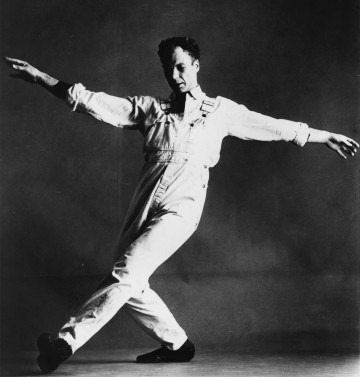
First published in the Northside San Francisco in September 2009
You have to love dancing to stick to it. It gives you nothing back, no manuscripts to store away, no paintings to show on walls and maybe hang in museums, no poems to be printed and sold, nothing but that single fleeting moment when you feel alive. It is not for unsteady souls. —Merce Cunningham
Merce Cunningham died on July 26, 2009 leaving a contribution in the field of dance and choreography that will not be forgotten. During the 20th century, he brought dance into the realm of fine art with his many collaborative works with contemporary visual artists and musicians.
Born in Washington in 1919, Cunningham was drawn to the study of dance at an early age. He moved to New York in 1939 where he quickly became a part of the American avant garde scene. It was also in New York that he met his primary collaborator and lifelong partner John Cage. Cage’s unorthodox approach to musical composition complemented Cunningham’s radical approaches to human movement and its limitless possibilities. Sequences of dance were chosen randomly using techniques such as the I Ching. Music and choreography were created separately, reinforcing that dance was not something intended to merely accompany music. Cunningham and Cage both felt that elements of chance in the creative process took their work in new and unexpected directions that allowed them to reap the benefits of serendipitous events. Narrative forms and traditional composition were abandoned and replaced with dance and mus ic as experience, coexisting as separate yet simultaneous forces. Cunningham adhered to this approach throughout his lifetime.
“I was working on a title called, “Untitled Solo,” and I had made—this was chance, using the chance operations—a series of movements written on scraps of paper for the legs and the arms, the head, all different. And it was done not to the music but with the music of Christian Wolff.” —Merce Cunningham, Merce Cunningham: A lifetime of Dance, 2000
While attending the famous interdisciplinary art school Black Mountain College in Asheville, North Carolina, Cunningham formed Merce Cunningham Dance Company in 1953. With the company, his distinctive choreographic style grew into an active touring collaboration. Early tours consisted of a small team that traveled the world fueled by a steady stream of bookings. A fellow Black Mountain student and painter, Robert Rauschenberg was Cunningham’s stage manager in the early years and enhanced the production with his colorful stage designs. Other legendary visual artists such as Roy Lichtenstein, Jasper Johns, Frank Stella and Bruce Nauman have since collaborated with the dance company.
Always looking for new ideas, Cunningham was one of the first to utilize technology with dance. In the seventies, he began exploring dance on film, and later motion capture technology. In the 21st century, the computer program DanceForms allowed him to capture his choreographic inventions while also teaching them to dancers with a greater concentration on subtle nuances and gestures.
Only a month before his death, The Merce Cunningham Dance Foundation announced the Legacy Plan. This plan will provide direction for the Dance Company as it moves into the future. In its performance of Cunningham’s hundreds of dances, the Plan will allow audiences to experience the world of Merce Cunningham as he intended along with a history of how he came to bring new life to the world of dance.